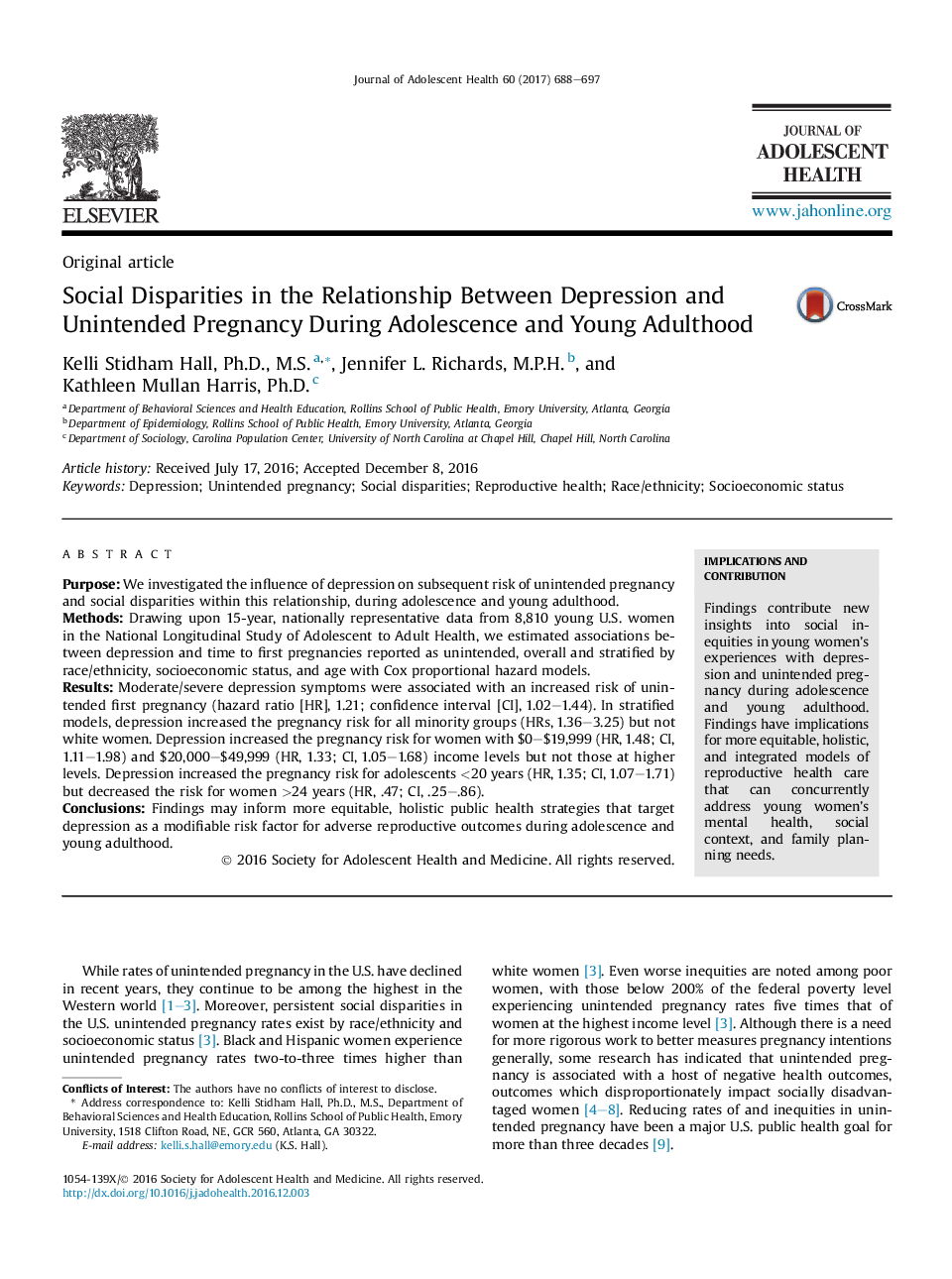| کد مقاله | کد نشریه | سال انتشار | مقاله انگلیسی | نسخه تمام متن |
|---|---|---|---|---|
| 5121273 | 1486693 | 2017 | 10 صفحه PDF | دانلود رایگان |
PurposeWe investigated the influence of depression on subsequent risk of unintended pregnancy and social disparities within this relationship, during adolescence and young adulthood.MethodsDrawing upon 15-year, nationally representative data from 8,810 young U.S. women in the National Longitudinal Study of Adolescent to Adult Health, we estimated associations between depression and time to first pregnancies reported as unintended, overall and stratified by race/ethnicity, socioeconomic status, and age with Cox proportional hazard models.ResultsModerate/severe depression symptoms were associated with an increased risk of unintended first pregnancy (hazard ratio [HR], 1.21; confidence interval [CI], 1.02-1.44). In stratified models, depression increased the pregnancy risk for all minority groups (HRs, 1.36-3.25) but not white women. Depression increased the pregnancy risk for women with $0-$19,999 (HR, 1.48; CI, 1.11-1.98) and $20,000-$49,999 (HR, 1.33; CI, 1.05-1.68) income levels but not those at higher levels. Depression increased the pregnancy risk for adolescents <20 years (HR, 1.35; CI, 1.07-1.71) but decreased the risk for women >24 years (HR, .47; CI, .25-.86).ConclusionsFindings may inform more equitable, holistic public health strategies that target depression as a modifiable risk factor for adverse reproductive outcomes during adolescence and young adulthood.
Journal: Journal of Adolescent Health - Volume 60, Issue 6, June 2017, Pages 688-697
